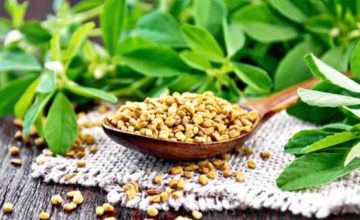
Creating a herb garden is an easy way to teach young children how to grow their own food.
Many herbs are easy to grow and have fragrant leaves, providing additional interest to young minds.
Encourage your kids to plant the herbs with you, and label them with lollipop sticks so they know what they’re growing.
Then, simply cook meals that require fresh herbs as ingredients – your children will be hooked for life.
How to grow annual herbs from seed
You will need
- Peat-free, multi-purpose compost
- Seeds of annual herbs such as basil, parsley, coriander and dill
- Small pots (you can use old yogurt pots or other containers – simply add drainage holes)
- Hand trowel
- Clear plastic bag (optional)
Method
- Fill your container with peat-free compost and tamp it down gently to remove air holes. Water the compost and allow to drain.
- Scatter a few seeds sparingly on the surface. Cover with a thin layer of compost.
- Ideally, cover the pot with a clear plastic bag or similar, to create a ‘mini greenhouse’. This will speed up germination. Pop on a windowsill and remove the plastic when the seeds have germinated.
- After germination, water the compost when dry – about once a week. When the herbs have grown 10cm tall, you can ‘pot them on’. Plant outside after late May, as these herbs are fragile.
How to plant herbs into pots or the garden
You will need
- Peat-free, multi-purpose compost
- Potted perennial herbs such as oregano, mint, chives, thyme and rosemary, or annual herbs that you’ve grown from seed
- Large container with drainage holes to plant them in, or a dedicated patch of garden
- Hand trowel
Method
- If planting in a container, fill two-thirds with peat-free compost. For growing in both pots and the ground, aim to plant the herbs a hand’s width apart.
- Use a trowel to dig a hole slightly larger than the herb rootball and plant your herb plant. Backfill with compost and firm around the plant, gently.
- Add more compost around the plants if necessary. Water well.
- Label the herbs so your children know which is which.
Top tips for making a herb garden
- Plant your herbs in the right spot – too much sun can cause basil, parsley and coriander to flower and seed, which stops them producing delicious leaves. However, oregano, mint, chives and rosemary thrive in sun, so are best planted in a sunnier spot.
- It’s best to grow mint in a pot on its own, as it can quickly smother other herbs.
- Remember that most herbs are Mediterranean so don’t need too much water. Basil hates being over-watered – water it during the day only and don’t let its roots sit in water.
- Sow seeds of annual herbs every two-three weeks so you have a continuous crop throughout summer.
- It’s a nice idea to let some herbs flower, as they attract bees. Oregano and rosemary flowers are particularly popular with bees. You could also leave annual herbs such as coriander and basil to flower after they’re past their best.
Related ItemsHerbs




